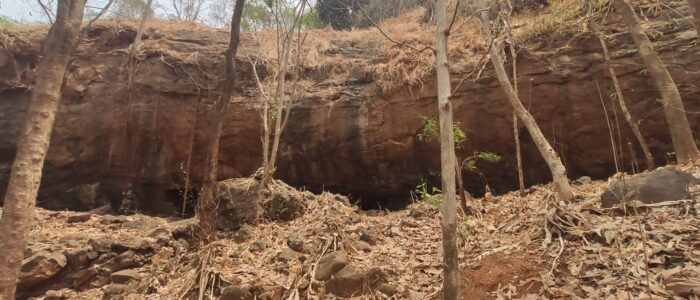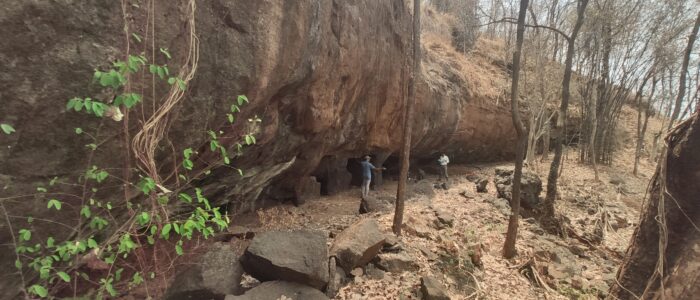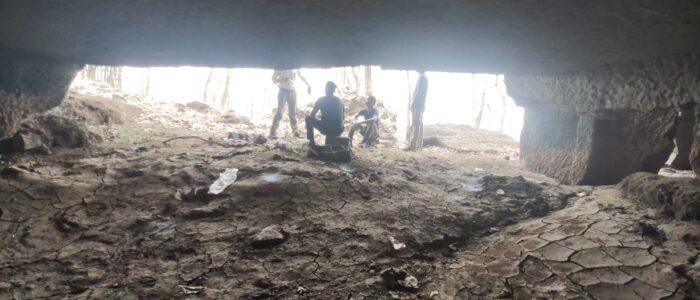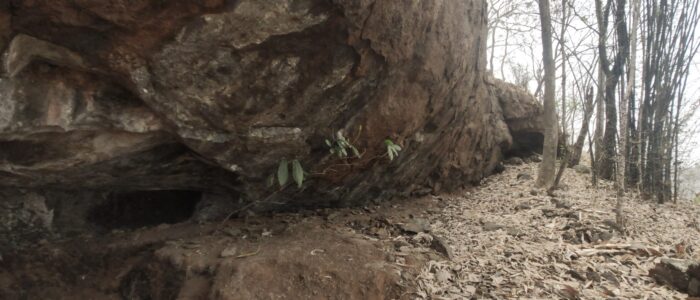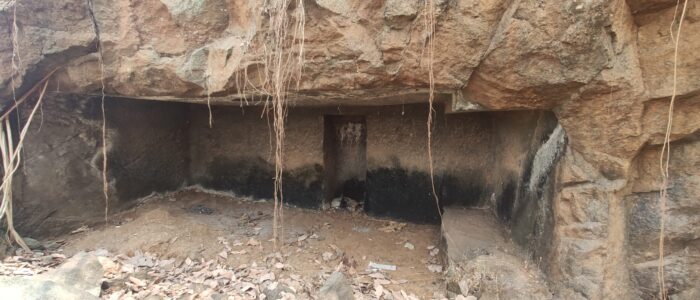Kol Caves
are two small groups of caves situated on a hill behind the Kol Village near Mahad. These caves don’t have any sculpture but it has Inscription in Dhammalipi. The Kol Caves are ancient caves with a history of the Satvahana period and their ancient heritage is valuable.
Location:
Kol Buddhist Caves are situated on a hill behind the Kol Village near Mahad. Mahad is a city in the Raigad district situated in the North Konkan region of Maharashtra state, India. It is located 167 km from Mumbai, Maharashtra, India.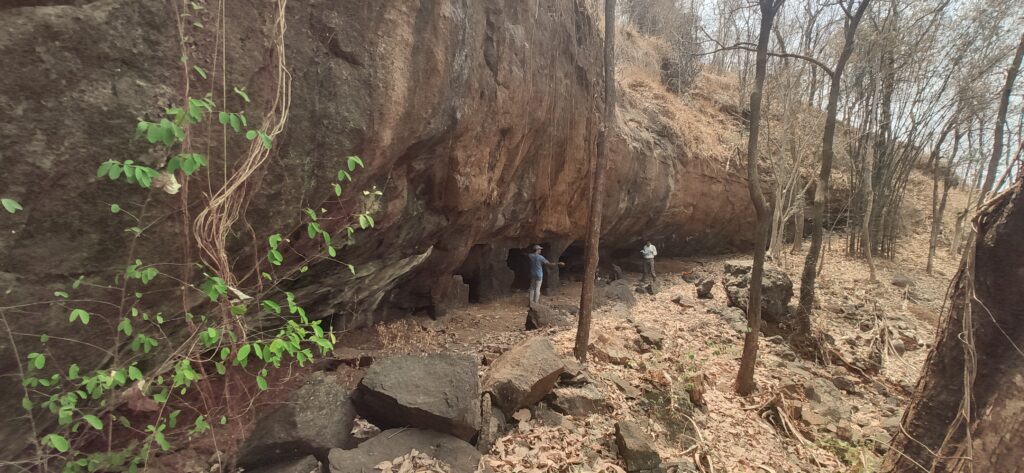
Description:
Kol caves having two small groups of caves still in good condition. The first group, to the north-east of the village, consists of two ruined caves whereas the second group, to the south-east contains seven caves. All are apparently unfinished. This second group having three inscriptions in good condition and can be readable.
History:
According to history, These caves were built around the first century BC and these are the caves of the Satvahana period under the rule of Gautamiputra Satkarni. At that time, Buddhism was flourishing in India. The Satvahana kings are mentioned as the Mandalik king of Emperor Ashoka, and in Ashoka’s time, Buddhism was at its peak in Maharashtra, even after the tenth century AD.
The reason behind the construction of these Kol caves is to stay for the monks who travel to spread and propagate the Buddha’s Dhamma.
The inscriptions on these caves mentioned the names of the people who donated to carve the caves.
These caves are mentioned in James Burgess’s Epigraphia Indica, as well as in Bueller’s Indian Paleography, and in Luder’s Epigraphia Indica.
Cave Architecture:
Cave No. 1: This is a small monk’s abode. At present, it is full of mud and the inscription on it is obscure. These caves were built to accommodate the monks.
The name of the cave carver is in the inscription but it is currently unclear. You can’t read any of the crafts here because the caves are full of mud.
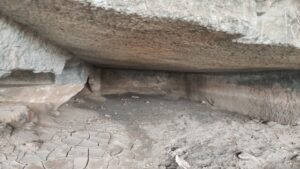
Cave No. 2: This is the main Vihar Caves. There is a possibility of a place of worship as this cave is full of soil. According to the villagers, some coins, etc. have been found in this cave. You can see the arch of these caves clearly of normal height can be at least 20 feet.
This cave is likely to have a place of worship as it is filled with soil.
There is a room inside on the left side of the cave. There may be an idol in this room because the caves are full of mud.
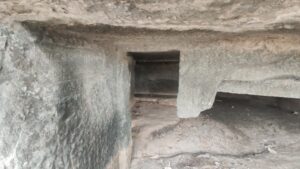
There is an inscription on the left side of the cave.
It is mentioned as “Tharat Gahpati Putas Sethis Sangharkhit Saday Dham Lane”
which means that “This Dhamma Cave was donated by Tharat Grihapati’s son Shrestha Sanghrakshit“.
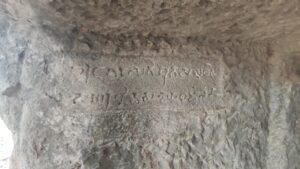
According to this mention, this is the main lane and is associated with the Buddhist Dhamma. This type of monastery is not seen in other places as there is a front room at the entrance of the monastery and there is a room on the left inside which may have a sculpture for prayers
It is built like a rock house. You can see it as a big monastery. It looks small because it is filled with mud, but it has a large space.
The room inside is also completely filled. The total size of these caves is larger than all the caves here and this is the main cave.
There are no crafts in the cave but there are carved inscriptions.
Cave No. 3: It is a small Sangharam, it is carved on the side of the main cave and there is an inscription about the main cave on the side of it. It should be carved to relax the monk who is carved for meditation. There is a small door and a horizontal seat inside. The rest of the lane is next to the main cave. Currently, the caves are in a dilapidated state, the front is full of soil.
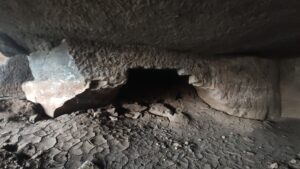
Cave No. 4: This is a bhikkhu’s abode, and all these caves are carved in one stone. These caves are in a broken state.
An inscription is carved on the top of this cave. The inscription in this cave is Dhammalipi and dates back to the Satvahana period.
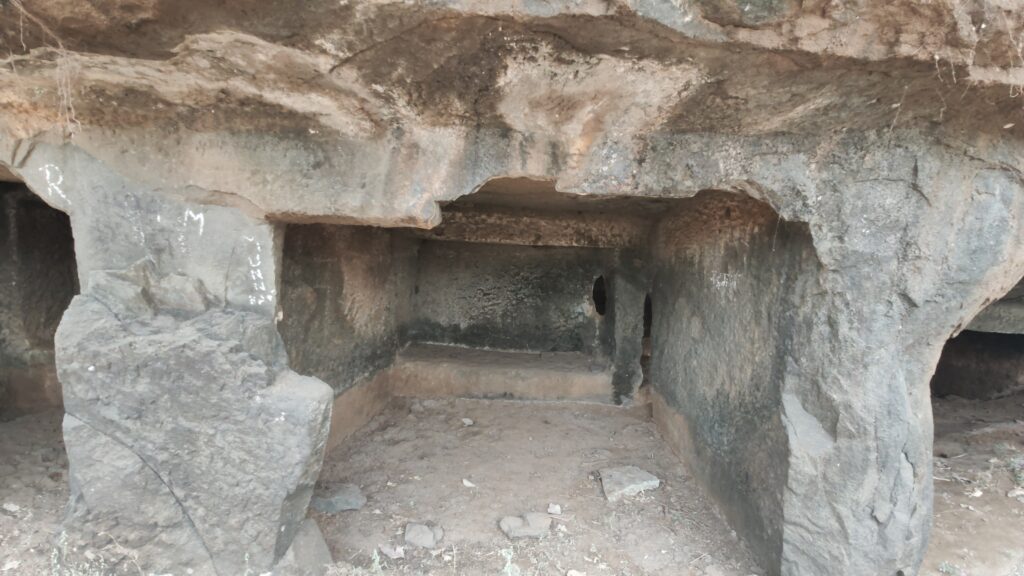
It is mentioned as “Aghasakas Gamikiasa Sivadatas Lene”
that means, “The caves have been donated by Sivadatta, a devotee from Aghasakas village“.
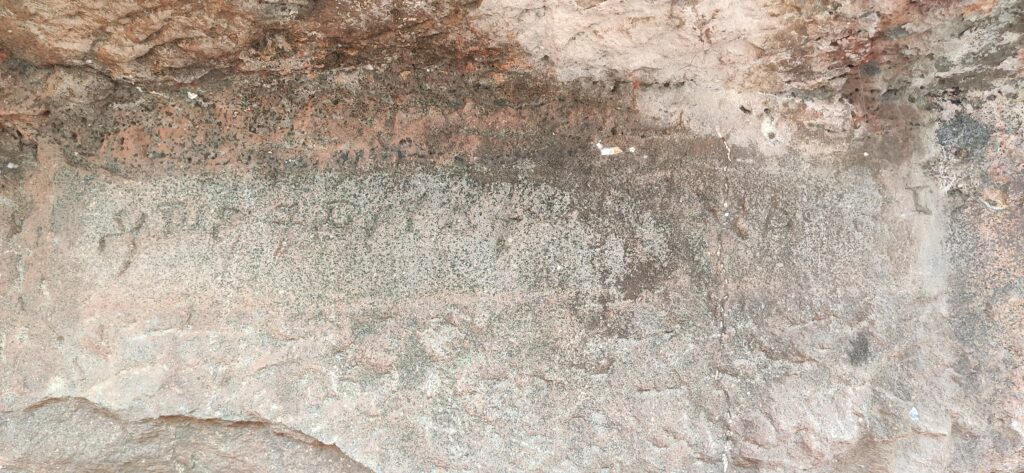
Cave No. 5: This cave is also a monk’s abode. There is a seating arrangement in the cave and there is an inscription on the frame of this cave. The entrance to the cave has a door and a window in front of the entrance. These caves look raised in black stone. The cave also has a door and a window.
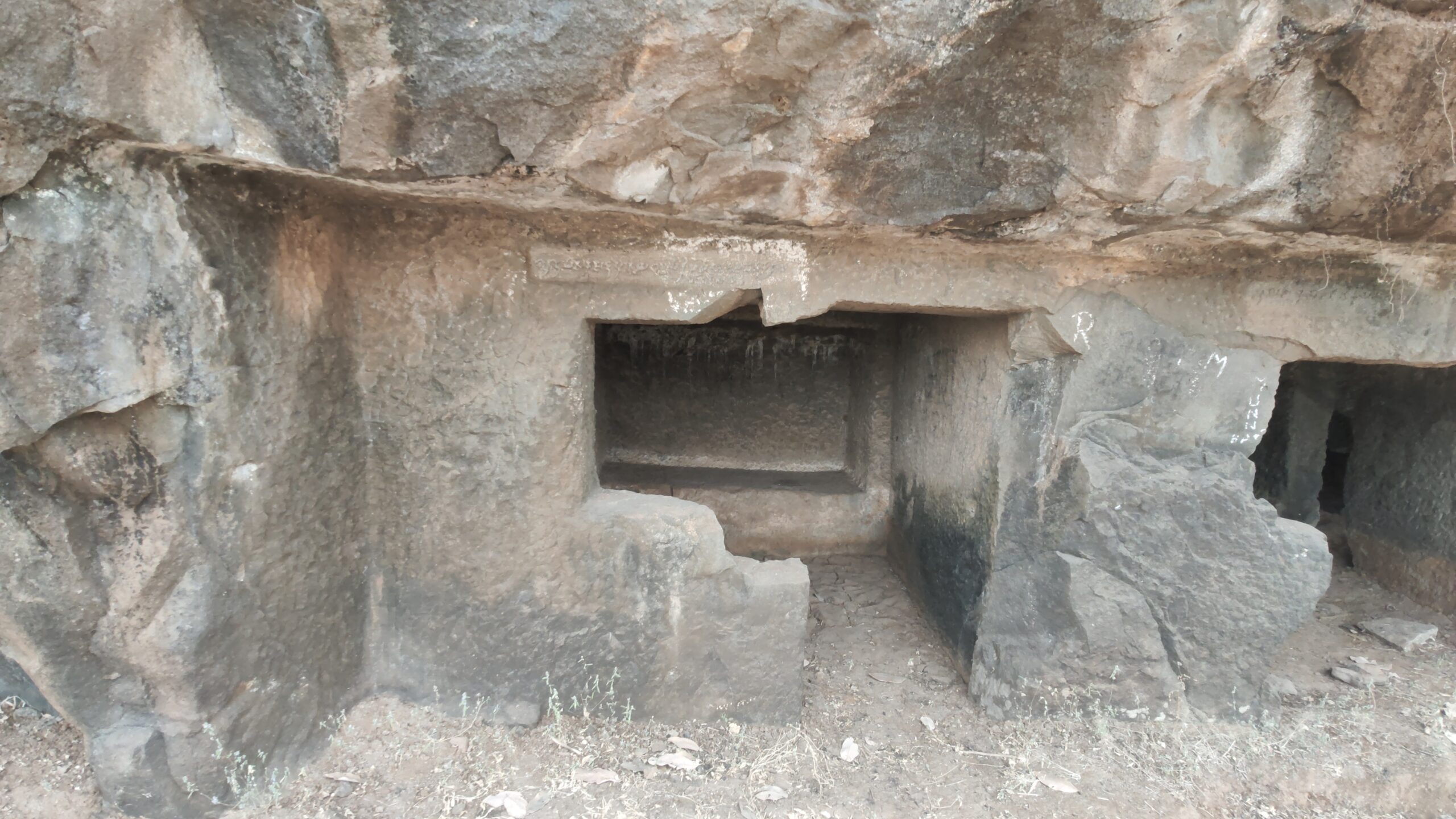
It is mentioned as “Bhadra Upasakas Duhutuyasiriya Sivadatas Bitiya Kaya Lane Dey Dhamma”
that means, “Caves donated by Dhamma Siri a daughter of Bhadra Upasaka and wife of Sivadatta”
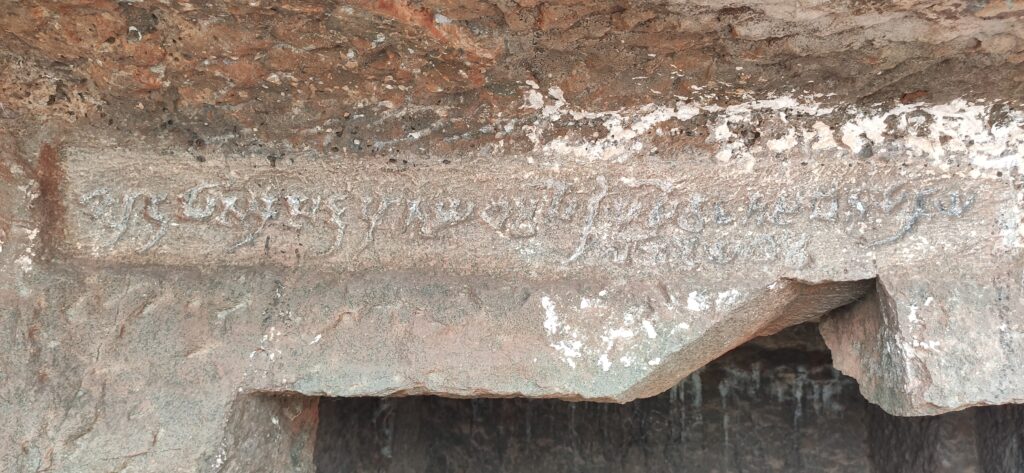
Cave No. 6: This is a Sangharam and it’s having only the carved marks around it which are now completely buried under the ground. There is likely to be a bhikkhu residence here. Although this cave is under the soil, it is not possible to give much information about it.
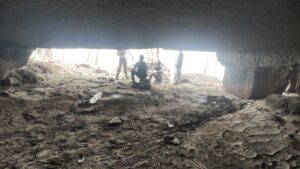
Cave No. 7: This is a simple cave and there is no carving work. There is only one Sangharam in this cave.
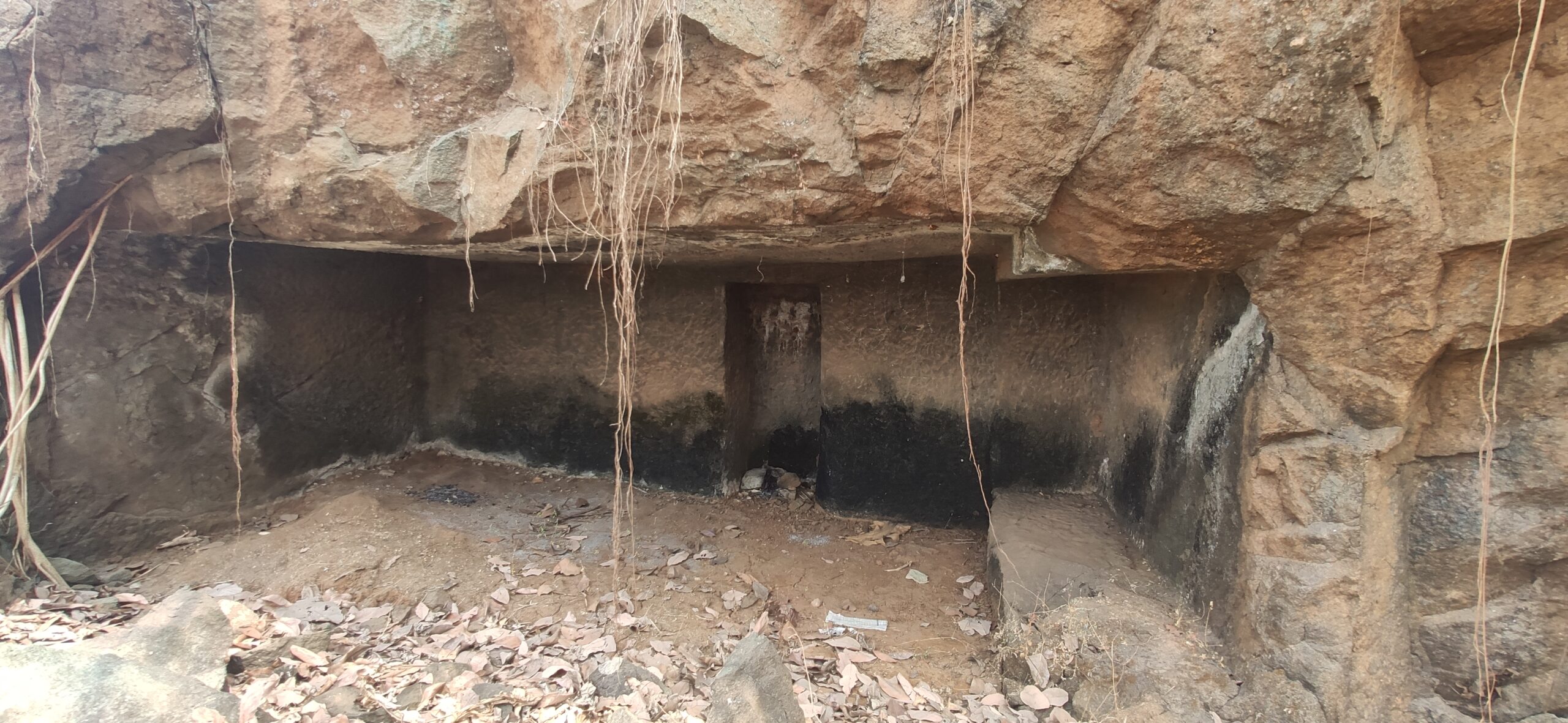
After seeing all these caves, these are the Buddhist caves built for the monks of the Buddhist Dhamma. The construction of these caves is carved in a single stone.
There are some more caves in the hills next to the caves.
The condition of the Buddhist caves has continued to this day because of the ignorance in the minds of the people and that is why these caves are isolated today.
The work of finding these caves has been done by the ABCPR Caves Conservation Team and all the young and knowledgeable people of the village are now working hard for the conservation of the caves.
It is important to pay attention so that these caves are not neglected.
Let’s try to let the world know the history of Buddhist caves.
Transportation Information:
Nearest Airport: Mumbai
Nearest Railway Station: Sape Wamne/Karanjadi/Veer Railway Station
Nearest Bus Station: Mahad Bus Stop
Map:
Committed to research & conservation of Buddhist monuments that have a historical heritage of India.
